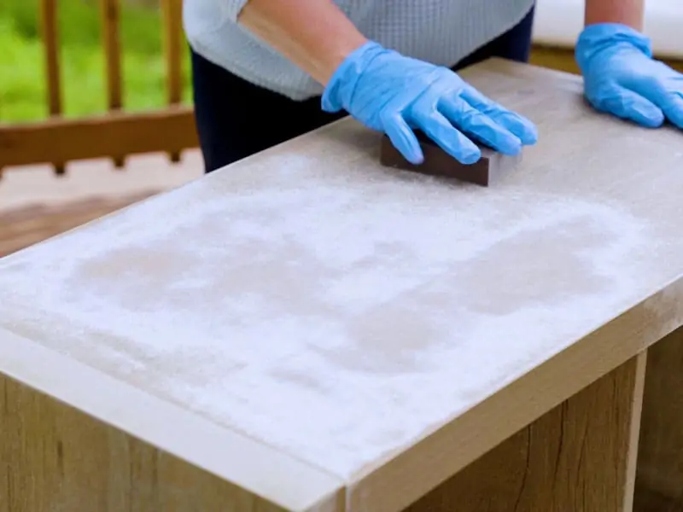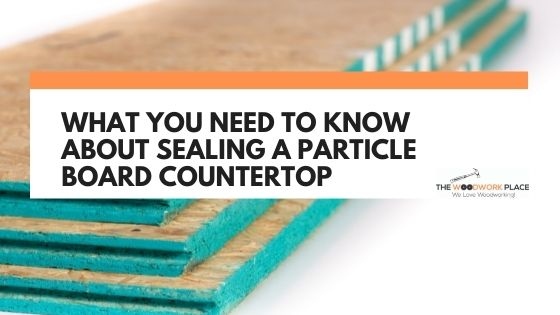If you’re working with particle board–which is also called chipboard–you may need to seal it to protect it from moisture. Particle board is made of wood chips, shavings, and sawdust that are glued together with a resin. It’s often used for shelving, furniture, and underlayment. While it’s not as strong or durable as plywood, it’s much cheaper. And, if it’s sealed properly, it can last for years.
Is Sealing Particle Board Truly Necessary?
If you have particle board furniture, you may be wondering if you need to seal it. Particle board is made of wood particles that are held together with glue. It is often used to make inexpensive furniture.

The furniture will not be damaged if it is not sealed. Sealing particle board furniture is not necessary. Sealing the furniture will also make it easier to clean. However, sealing the furniture will make it last longer.
Safety First
When working with any type of sealant, be sure to wear gloves, a mask, and protective eyewear. Before beginning any project that involves sealant, it is important to take safety precautions. In addition, be sure to work in a well-ventilated area. This is especially true when working with particle board, as the chemicals in the sealant can be harmful if inhaled or ingested.
Start Measuring and Marking the Particle Boards
If you’re working with particle board, it’s important to take accurate measurements and make precise markings before you start cutting. In this section, we’ll show you how to do just that. With a few simple tools and a little bit of know-how, you’ll be ready to start sealing your particle board like a pro.
Cut Your Boards Carefully
If the particle board is damaged, it may be difficult to seal it properly. A sharp knife or saw is essential for making clean, straight cuts. When working with particle board, it is important to take care when cutting the boards to avoid damaging them. It is also important to use a straight edge or template to guide your cuts.
Time to Apply the Sealant
It’s time to apply the sealant! Be sure to follow the instructions on the sealant can carefully. Work in small sections, and be sure to get into all the nooks and crannies. This is the final step in sealing your particle board. You’ll need to apply a generous amount of sealant to the surface of the particle board, using a brush or roller. Once the sealant is applied, let it dry completely before moving on to the next step.
Allow the Sealant to Dry
This will ensure that the sealant is properly adhered to the surface and will not be easily damaged. When sealing particle board, it is important to allow the sealant to dry completely before continuing.
Is Particle Board Better Than Plywood?
While it is not as strong or durable as plywood, it can be a good choice for certain projects. Particle board is a material made from wood chips, shavings, and sawdust that are glued together and pressed into sheets. It is often used as a cheaper alternative to plywood.
When used in these applications, it is important to seal particle board to protect it from moisture and other damage. It is also used as a substrate for countertops, flooring, and walls. Particle board is often used for furniture, shelving, and cabinetry.

You can use a sealant, paint, or laminate. Paint provides good protection but can be difficult to apply evenly. Each option has its own advantages and disadvantages. Laminate is the most durable option but it is also the most difficult to apply. Sealant is the easiest to apply but it is not as durable as paint or laminate. There are a few different ways to seal particle board.
Sealing will protect the board from moisture, damage, and wear. No matter which option you choose, it is important to seal particle board before using it in any application.
Is it Possible to Fix Damaged Particle Boards?
In fact, it’s quite the opposite. It’s no secret that particle board is not the most durable material on the market. So, is it possible to fix damaged particle boards? Particle board is known for being weak and easily damaged.

However, if the damage is severe, you may need to replace the particle board entirely. However, it is not always easy or straightforward. The short answer is yes, it is possible to fix damaged particle boards. Depending on the extent of the damage, you may be able to repair it with some simple DIY methods.
In this section, we’ll take a closer look at how to fix damaged particle boards. We’ll discuss some simple repair methods as well as some more extreme measures. Whether you’re looking to fix a small chip or a large hole, we’ve got you covered.
Frequently Asked Questions
1. What is particle board?
Particle board is a type of engineered wood that is made from wood chips, sawdust, or wood shavings that are glued together with a resin. It is often used in the construction of furniture, cabinets, and shelving.
2. Why is it necessary to seal particle board?
Sealing particle board helps to protect it from water damage, warping, and swelling. It also makes it easier to clean and helps to extend the life of the furniture.
3. How do you seal particle board?
To seal particle board, you will need to use a sealer that is designed for use on wood. You can find these sealers at most hardware stores. Apply the sealer to the particle board with a brush or a roller and allow it to dry according to the manufacturer’s instructions.
4. What are the benefits of sealing particle board?
Sealing particle board helps to protect it from water damage, warping, and swelling. It also makes it easier to clean and helps to extend the life of the furniture.
5. Are there any drawbacks to sealing particle board?
Sealers can be expensive and time-consuming to apply. In some cases, they may also change the appearance of the particle board.
Final thoughts
Sealing particle board is not a difficult task, and it is definitely necessary if you want your particle board to last. By following the steps outlined in this article, you can easily seal your particle board and extend its life.
